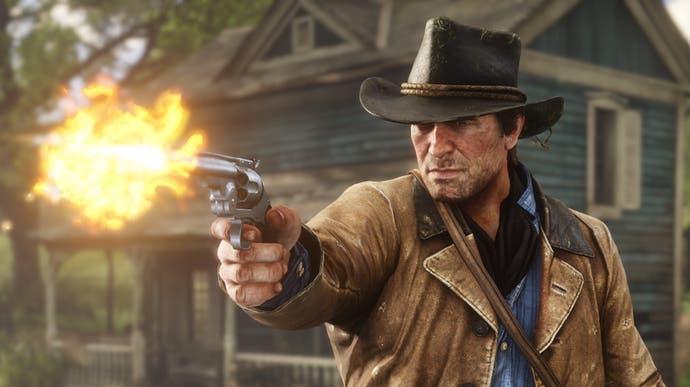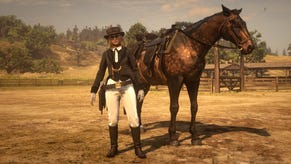What does it take to run Red Dead Redemption 2 PC at 60fps?
Do you really need ultra settings?
Red Dead Redemption 2 on PC has some issues - fixable issues - but they shouldn't distract too much from the scale of the overall achievement. Rockstar has taken one of the most advanced game engines in the market and opened up almost every aspect of its rendering to the audience, allowing graphics enthusiasts to push already pristine visuals to a new level of precision. As always with technology that pushes boundaries, there is a cost, and the fact that a fully maxed experience is beyond most mainstream graphics hardware is causing controversy. The thing is, excellent results can be achieved on some of the most popular gaming PC hardware: it simply requires the user to accept that in many cases, low and medium settings aren't inherently bad things. In fact, they may even present improvements over their Xbox One X equivalents.
Across the week of Red Dead Redemption 2's PC launch, benchmarks have been revealed, users have tested the game on their own rigs and in some quarters, there's the belief that the game is poorly optimised because changing settings to high or ultra can cause poor performance. However, after extensive granular analysis of the game's vast array of graphics options, what's clear is that the existing Xbox One X version - an outstanding technical achievement of this generation - is running using a mixture of settings across the board, with many of the effects actually running 'lower than low'. Crucially, the game still impresses: PC simply adds further fidelity.
The complete list can be found below, but suffice to say, Rockstar targeted the best bang for the buck on consoles and even effects that exhibit lower quality on X than on PC's lowest - volumetric resolution, for example - still look outstanding. Plug those settings into a perfectly affordable mainstream graphics card like the AMD Radeon RX 580 and achieving 1080p gameplay at 60 frames per second isn't difficult. However, running at low and medium settings seems to come with a stigma for the committed PC gamer. There's the sense that only high or ultra will do, and in the case of RDR2, this can cause lower than expected performance.
Is it really a 'sub-optimal' port then? In many ways, the exact opposite is true. Red Dead Redemption 2 is based on the latest version of Rockstar's Rage engine and while there are many similarities to the technology's last outing in Grand Theft Auto 5, much has evolved. For starters, the engine has transitioned away from supporting older graphics APIs and offers options for both Vulkan and DirectX 12. At 60 frames per second on the closest we could get to console equivalent settings, the game does have significant CPU usage, but core utilisation is fairly level on both APIs - usually a good sign for the quality of a PC port. The Vulkan API is the default and we'd suggest sticking to that. Comparing both APIs on GTX 1060 and RX 580, Vulkan delivered faster results on both and eliminated infrequent stutter on the AMD side we noted when DX12 was used.
In terms of basic scalability, we started out with RTX 2080 Ti set to 1800p resolution. Dropping from a blanket array of ultra settings (without touching the advanced menu) down to high, performance increased by 21 per cent, increasing to 36 per cent to medium. From top to bottom - ultra to low - there's an increase of 53 per cent. From a resolution perspective, dropping from 4K to 1440p adds 56 per cent of performance, rising to 93 per cent at 1080p. These are interesting figures, but based on our later 'real world' tests, those results are likely to be more stark on lower end kit.
In common with most PC games, Red Dead Redemption 2 is best tuned to varying degrees on a per setting basis. It lacks the option to move between ultra, high, medium or low presets on a global scale - most likely because this doesn't really make sense for the game. Instead, there's a slider that allows you to balance performance and quality. As you move the slider, the settings menu adjusts dynamically. The game is attempting to get the balance right for you - but for the user seeing a combination of medium, high and ultra settings, there's bound to be confusion. After all, why should I be combining low quality volumetrics with high quality mirror reflections, for example? The slider attempts to inform the user that some features have heavier performance implications than others as you move through the settings - but there's almost like an inbuilt mentality for the PC user that low/medium is bad and is best avoided.
All of which leads us onto the console-equivalent experience. There's no doubt that Red Dead Redemption 2 is one of the most impressive achievements of the generation and on Xbox One X in particular, it's a revelation. We painstakingly broke down the game into its individual visual components in order to get an idea of where Rockstar itself decided where the best 'bang for the buck' would be - and the results are enlightening - and the choice of the performance/quality slider makes a lot more sense. Of course, the consoles run the gamut of the available options based mostly on performance, but some key features are geared more towards the higher end of the engine's visual capabilities.
Xbox One X offers up a vast 9GB of useable memory to developers, and Rockstar puts that to good use by delivering the equivalent of PC's ultra quality textures - but that is the only ultra setting option on the table, alongside the geometry level of detail which is the same as the PC's maximum five out of five setting. Shadow quality, water refraction quality, parallax occlusion mapping and aspects of tessellation correlate with PC's high setting, but elsewhere, consoles don't go near the higher end of the PC version's spec.
| Xbox One X Console Equivalent Settings | |
|---|---|
| Ultra | Texture Quality, Geometry Level of Detail (5/5) |
| High | Shadow Quality, Mirror Quality, Soft Shadows, Water Refraction Quality |
| High/Medium | Tessellation, TAA, Volumetric Lighting Quality, Parallax Occlusion Mapping |
| Medium | Lighting Quality, Screen-Space Ambient Occlusion, Particle Quality, Particle Lighting Quality, Fur Quality, Decal Quality, Water Reflection Quality |
| Low/Medium | Global Illumination Quality, Grass Shadows |
| Low/Lower Than Low | Far Shadow Quality, Reflection Quality, Near Volumetric Resolution, Far Volumetric Resolution, Water Physics Quality (1/6), Tree Quality, Grass Level of Detail (2/10) |
| Disabled Features | FXAA, MSAA, Unlocked Volumetric Ray March Resolution, Full Resolution SSAO, Long Shadows, TAA Sharpening |
Note: Some of Xbox One X's effects appear to be hybrid versions of low and medium, or medium and high. We'd recommend starting with the higher quality version, but should emphasise that the lower quality rendition of the effect still looks quite comparable across the run of play.
While geometry level of detail is maxed on the X, grass and tree distance detail is at a minimum. Grass shadows barely register, while water physics are at PC's lowest end. Volumetric resolution - one of the game's defining features, remember - delivers a 'lower than low' quality level on Xbox One X, as does far shadow quality (and yet both look absolutely fine!). Other features such as global illumination exhibit behaviour that presents like a hybrid of low and medium, while others still are completely disabled. Long shadows in particular can impact the look of many scenes very significantly.
We're working on a complete settings guide that details how Rockstar has handed over an impressive level of scalability to users - by attempting to demonstrate how each component piece of technology scales, or more basically to showcase what the settings actually do. But ultimately, beyond the obvious stuff like grass and tree draw distance, many of the high and ultra quality levels are all about precision and 'correctness' - and those things have a computational cost. If you don't need them, better value bang for the buck options are there. Obviously, they needed to be developed in order to get console versions running at anything like a stable 30 frames per second - but the key point is that even if they're labelled low or medium in the PC options screen, they don't necessarily look bad. Far from it.
All of which brings us on to expectation management. When first loading up a PC port, there's the sense that high quality settings should be the default for good performance on a decent mainstream gaming PC. Ramp up anisotropic filtering and the remaining GPU resources can be used to power ahead in terms of performance. Where a console game runs at 30fps, far superior PC CPU power can be used to double that fairly easily and the expectation is that mainstream GPUs like AMD RX 580 and Nvidia GTX 1060 have the graphics power to deliver 1080p60. Red Dead 2 can do that on PC too. In fact, it can do it better than many PC ports we've looked at, but it does involve being realistic with settings management.
Helping matters just a touch, Red Dead Redemption 2 ships with an in-built benchmark. There are four time-lapse vista shots followed by a slice of scripted gameplay from one of the game's most performance-heavy areas, St Denis. However, our advice would be to find a taxing area within the game itself and tweak from there. With that said, what the benchmarks do show is that AMD hardware possesses a remarkable performance advantage over Nvidia. So for example, the Radeon RX 580 is a good performer, but its usual GTX 1060 sparring mate is well off the pace. Its Turing-based successor, GTX 1660 puts up a better fight, but the bottom line is that to beat the 580, a proper step-up is required: GTX 1070 or GTX 1660 Super/Ti. This applies whether you use the Vulkan or DX12 graphics APIs - and it's genuinely surprising to see just how far ahead AMD is here across the board.
Red Dead Redemption: Console+ Settings, TAA
The GPU ranking table above shows the performance differentials across 18 graphics cards at 4K resolution, using just the final St Denis test of the in-game benchmark (hence results are different than the results in the video - even if the overall trend remains the same). We've stuck to the console equivalent settings but added 8x anisotropic filtering and where Xbox One X used hybrid settings, we've opted for PC's higher equivalent - think of this as 'consoles plus' if you like. With all of the data in front of us, it seems to be the case that Pascal-based Nvidia cards are punching well below their weight (for example, GTX 1080 should be a touch faster than RTX 2060, not 11 per cent slower) while AMD performs better than expected against Turing, making the Pascal results look even less competitive. RTX 2080 Super is faster than Radeon 7, but it's only the RTX 2080 Ti that shows Nvidia really pulling ahead - as you would hope for the most powerful and expensive single-chip video card in the consumer space.
It's the kind of disparity we rarely see - and may speak to the extent to which Rockstar originally tailored its engine for the consoles. Many of the low-level GPU techniques used on AMD-based consoles will transition across to PC via Vulkan or DX12. It's rare to see a gulf as large as this and historically, it usually prompts an aggressive driver-level optimisation response from Nvidia. What is also curious about the game is that older AMD GPUs didn't seem to be left behind - an MSI Gaming factory OC version of the Hawaii-based R9 390 delivered 93 per cent of the performance of the stock RX 580. And also curious is that an MSI Gaming factory OC GTX 970 performs within spitting distance of a reference GTX 1060.
In terms of issues we have with port in general, it's clear that improvements are required in terms of stability. Crash to desktop is a problem - one that I thought was fixed with 3GB patch that arrived later in the week. However, I still see it as a problem and one that seems to manifest when using top-end graphics options, or when ultra textures are in play on higher end settings using video cards with less than 6GB of VRAM (speaking of which, the VRAM usage meter is inaccurate and often reads GPU memory allocation incorrectly). Meanwhile, texture quality adjustment is very rough and the differences between settings can be stark.
However, the biggest problem facing the Red Dead 2 port is essentially communicating the objectives of the project to the users and emphasising the potentially enormous frame-rate implications inherent to some of the settings - something the quality vs performance slider only hints at. To start with, a revamp of the settings UI would be enormously helpful, with recent Ubisoft games and COD Modern Warfare leading the way with visual comparisons that show what the settings actually do. A basic explanation of the performance hit to each setting would also be welcome.




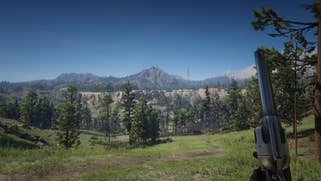
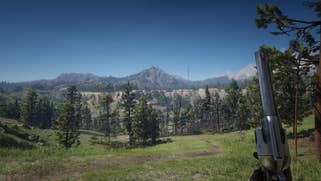





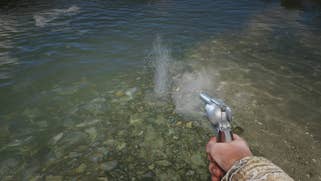
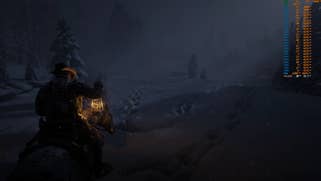

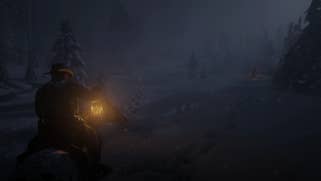

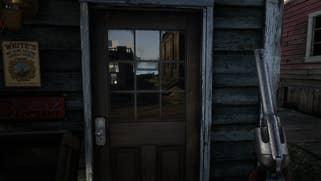
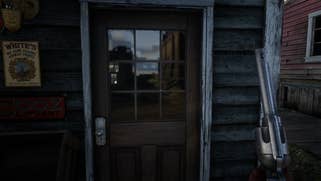
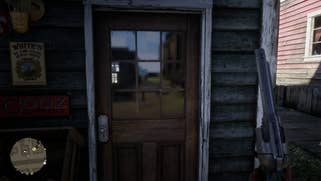
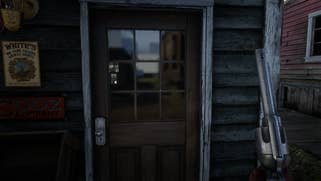
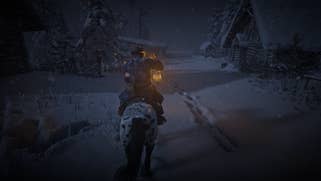

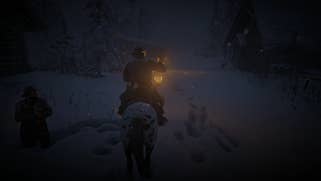

And maybe on a more general level, PC games should ship with a default settings arrangement in line with the bang-for-the-buck choices made on the consoles, with Metal Gear Solid 5 Ground Zeroes standing as an excellent example of this. Maybe it wouldn't be a perfect fit for PC users across the board, but as a starting point for settings tweaking, we've found that pinning down the choices the developers themselves made when targeting resource-constrained hardware is always a good place to start. After all, they know their games better than anybody else.
As for Red Dead Redemption 2's settings arrangement, what we have here is a game obviously designed to scale up to future hardware - but our feeling is that Rockstar missed a trick in telling users more explicitly how to setup the game on today's graphics tech. Instead, the developer has effectively delivered the opportunity for PC users to push the limits of a frankly brilliant, state-of-the-art graphics engine, but the choice of conventional settings labels is clearly causing confusion.
And this is concerning because if a developer goes the extra mile with a PC port and ends up with negative reactions from the userbase, it may be less inclined to push the envelope in its next project. There's a decent chance with this title that if Rockstar had simply named console equivalent settings as 'high' and shipped with very little upwards scalability, the game would be lauded as a solid 'optimised' port. And perhaps if the lower-than-low console equivalent settings became RDR2's low settings, with everything else bumped up in line, the reaction to the game would have been different. And maybe there's an argument for ultra to be called something like 'reference' instead - with clear communication that this is a quality mode designed to be utilised by the GPUs of tomorrow. Kingdom Come Deliverance's ultra high mode does a good job of telling us that its upper-end settings are very much designed for the future of PC hardware - it's an invitation to try now, but return in a few years if you want that technology to be performant.
On Digital Foundry, we've been concentrating a lot in our PC coverage on what we call optimised settings - the idea of retaining as much of the 'ultra' experience as possible while delivering strong performance. Red Dead Redemption 2 demonstrates that the notion of whacking everything up to ultra settings - or even high - and judging the game from there isn't a great idea, especially when in many cases, lower presets still look great and can still out-spec Xbox One X visual features. Our advice? If you're looking for a good balance between quality and performance, our console equivalent settings are a decent starting point - but even tweaking below that can still result in a very good-looking game.
